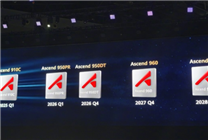Huawei’s Vision for AI: Unleashing the Power of Computing
Key Takeaways:
- Huawei emphasizes computing power as essential for the future of artificial intelligence, positioning itself as a leading provider of AI solutions in China.
- The company is set to launch the Atlas 950 SuperPoD with 8,192 cards this quarter, complemented by future releases of advanced chips through 2028.
- The strategic vision includes a "super node + cluster" approach, ensuring sustainable and ample computing resources for AI development.
At the Huawei All Connection Conference 2025 in Shanghai, the company’s Vice Chairman and Rotary Chairman, Xu Zhijun, articulated a profound commitment to the computing power landscape, presenting it as a cornerstone for artificial intelligence (AI) innovation. This emphasis on computing power will not only shape the historical narrative of AI but also define its future trajectory, particularly in China.
The Core Strategy: "Super Node + Cluster"
Huawei’s strategic framework revolves around the "super node + cluster" computing power solution. “We are confident in our ability to deliver sustainable and abundant computing power,” Xu stated, reinforcing Huawei’s position as a pivotal contributor to the rapid advancement of AI technologies. This robust framework aims to facilitate the seamless integration and expansion of AI capabilities across various sectors.
Upcoming Innovations in Computing Power
One of the most anticipated products is the Atlas 950 SuperPoD, set to launch in the fourth quarter of this year. With an impressive computing scale of 8,192 cards, this supernode promises to redefine performance standards within the industry. Furthermore, the next generation—Atlas 960 SuperPoD—is slated for release in the fourth quarter of 2027, boasting an even more powerful configuration of 15,488 cards.
In addition to these supernodes, Huawei is rolling out a series of advanced chipsets to power its AI initiatives. Notably, the Asteng 910C chip, launched earlier this year, will soon be joined by the Asteng 950PR in early 2026, followed by the Asteng 950DT later that year. The Asteng 960 chip will hit the market in late 2027, culminating with the Asteng 970 chip in late 2028. This progressive roadmap signifies Huawei’s commitment to maintaining a competitive edge in the AI landscape.
The Impact of Computing Power on AI
Xu Zhijun underscores the vital role of computing power in both the current and future AI ecosystems. As artificial intelligence applications permeate various facets of society, from healthcare to finance, the demand for robust computing capabilities will only escalate. Huawei’s focus on developing and deploying high-performance computing solutions ensures that it remains at the forefront of this technological evolution.
Looking Ahead
Huawei’s investments in AI infrastructure and innovation are designed not just for short-term gains, but for a sustained impact on China’s AI landscape. The combination of supernodes and cutting-edge chips positions Huawei to meet the burgeoning demand for computing power, driving advancements that could lead to groundbreaking AI applications.
In conclusion, Huawei’s bold vision for AI is anchored in its commitment to computing power as an integral part of this digital transformation. By leveraging supernode technology and launching state-of-the-art chips, Huawei aims to secure its foothold as a leader in the global AI market. This strategy not only reflects the company’s ambitions but also highlights the importance of reliable and advanced computing capabilities in realizing the full potential of artificial intelligence.
By focusing on these developments, Huawei is paving the way for a new era in AI deployment, setting the stage for innovations that could shape industries and transform lives. The journey of AI in China is closely tied to the advancements in computing power, and Huawei stands at the helm, ready to drive this evolution forward.







